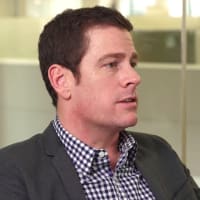How the world’s best companies build unbeatable focus
(By the way, to get articles like this free in your inbox, subscribe to our newsletter.)
In our experience, wildly successful businesses share a singular quality.
Focus.
You can see it in the best start-ups and the nimblest giants. Companies like Google use it to out‑think, out‑test, and out‑innovate their competition. (We know because we’ve worked with them.)
But is focus a goal to pursue or a side‑effect of something else?
In the following article, we’ll share the simple insight that’s baked into the culture of Conversion Rate Experts (CRE), Google, Apple, Facebook, and our most successful clients. We’ll also cover the following:
- How most companies work—and the biggest reason they stall.
- The counterintuitive choice of highly focused companies.
- Five hidden costs of stalled projects.
- The simple rule that improves focus (and almost everything else).
Are you 8,760 times slower than your competition?
One business we worked with took 30 minutes to implement A/B testing software; another took six months. That’s 8,760 times slower.
Which company is more likely to double, triple, or quadruple its profits?
Many companies are filled with bright, ambitious teams using modern productivity tools, yet still struggle to make progress. In most cases, it is not the people who are the problem but the workflows they follow that lead to confusion, bottlenecks, and blockages. They are like good drivers stuck in gridlocked traffic.
How do you know if you have this problem? Two signs are:
- Everyone’s productive—but everything takes ages to happen.
- Some projects never finish.
The good news is that productivity problems are almost always improved by focus. One of our clients took 119 days to turn an idea into a statistically significant result. We helped them reduce that time by more than 75%–and increased their sales by $29 million per year!
Of course, the importance of focus feels like a mundane truth. We’re all busy. We’re all juggling multiple projects and priorities. We understand the value of focus. That’s why we spend so much time tending to our to-do lists and investing in systems to manage the load.
And yet, much of this investment fails. We often work harder and get less done.
So why is real focus so hard?
One common reason—to borrow from Indiana Jones—is that we are digging in the wrong place.
To understand why, we’re returning to the aircraft manufacturing facility where Martin, our CEO and former Aerospace Engineer, learned about process engineering and lean manufacturing. (It’s also where he learned the most powerful technique we know–Genchi Genbutsu.)
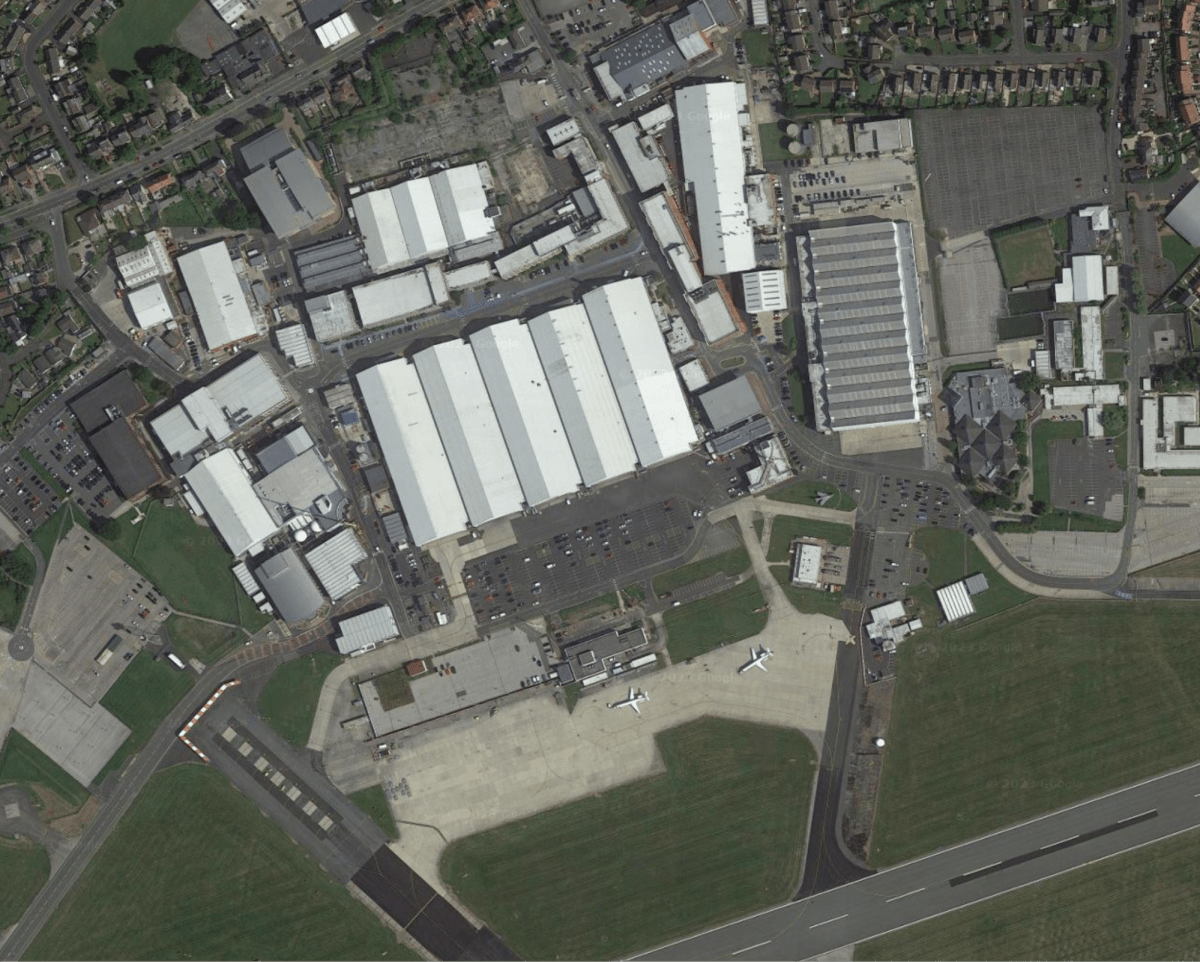
How most companies work—and the biggest reason they stall
Martin learned that any business is the interplay of work units, resources, and value.
- Work units are the output of a business (a project, a product, or a service).
- Resources add value to the work unit (a worker, a process, or a robot).
- Value is any activity that moves the work unit closer to completion. (The point where a customer will pay for it.)
Let’s pretend we are an (ahem) CRO consultancy. Our work units could be a series of landing pages, and our resources are our team members (we don’t use hydraulic presses or kilns to create our landing pages yet).
Each landing page will flow through various team members as it moves from an idea to a live web page. The process looks something like the following:

In an ideal world, neither the landing pages nor the team members waste time waiting for the other. The moment someone completes their work, the next landing page takes its place. Like a production line, the process flows smoothly from one stage to the next.
But for most of us, the world is far from ideal. Imagine that our landing pages are quick to write but hard to design. What happens?

This variation in timing creates a bottleneck. Work piles up in front of the designer, and the perfect process stalls. Suddenly, we have landing pages (work units) waiting for team members (resources) and team members waiting for landing pages.
Variation is the single biggest reason that processes break down.
The value of perspective
Variation isn’t just a challenge; it often feels inevitable. Conflicts and trade‑offs are ever‑present for many businesses. One way or another, our landing pages or team members will spend time waiting.
But let’s look at these delays from two perspectives.
Many companies think it’s best to keep the resources busy…
Imagine if we asked the designer to map out their working week. When were they adding value? When were they waiting with nothing to do?
We can visualize productivity using a time value map.

Most companies would welcome this scenario. The designer is adding lots of value. But utilization is not the whole story. Looking deeper, we often discover that team members are split between many projects. (This is especially common in companies that work for numerous clients.)
On the surface, fractured work may not seem like a problem. The designer was working hard. But let’s examine the week from a different perspective.
…and if you keep the resources busy, the work units have to sit around waiting
Imagine asking a landing page to describe the same week. What might we learn from the resulting timeline? (Green above the line shows the hours that the landing page was worked on. The red below the line signifies time spent waiting.)

The landing page’s week looks a lot less impressive. If the landing page could talk, it might tell us—between sobs—about being lost on a to‑do list or left on someone’s desk. And this is just one week. If the landing page is large, it might be weeks before the work is completed (and the company reap the rewards).
So, which is better? Keeping the resources busy and the work units sitting around? Or vice versa?
For most of us, maximizing team member (resource) efficiency makes intuitive sense. If variation is inevitable—and something has to wait—we’d rather it be the landing page than our limited (and well paid) team members. Surely?
(This forthcoming twist is so telegraphed.)
Before we see how the world’s most focused companies think about this, let’s look at two contrasting processes.
Maximizing resource efficiency (the airport)
In most businesses, resources are royalty, and the work units have no choice but to wait. We can see this clearly in airports because we, the passengers, are the work units. To fly, we must wait for the resources; the airport shuttle driver, the check-in team, security, and the flight crew.
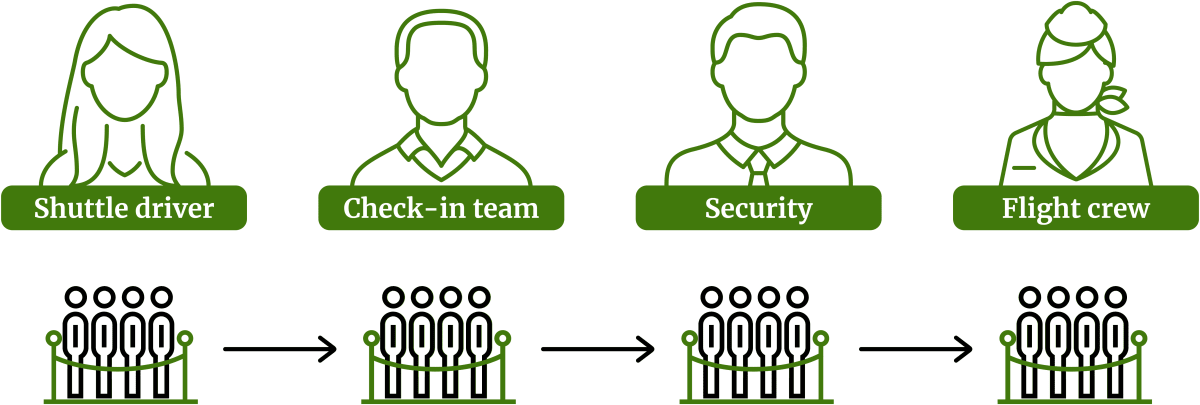
The airport is designed to maximize worker (resource) efficiency. Each worker must have an uninterrupted supply of travelers to keep them busy. The queues of passengers act as a buffer of work units waiting to be processed, with the inevitable cost to the passengers’ efficiency (and sanity).
Maximizing work unit efficiency (the President’s arm)
In some processes—far fewer—the work units are king, and the resources must wait.
Imagine we’re back at the airport, and the President has broken their arm and needs to fly home for surgery. The President is now the work unit, but will they have to wait their turn as the rest of us would? No way. The treatment team (the resources) will be alerted, prepped, and waiting for them to arrive.
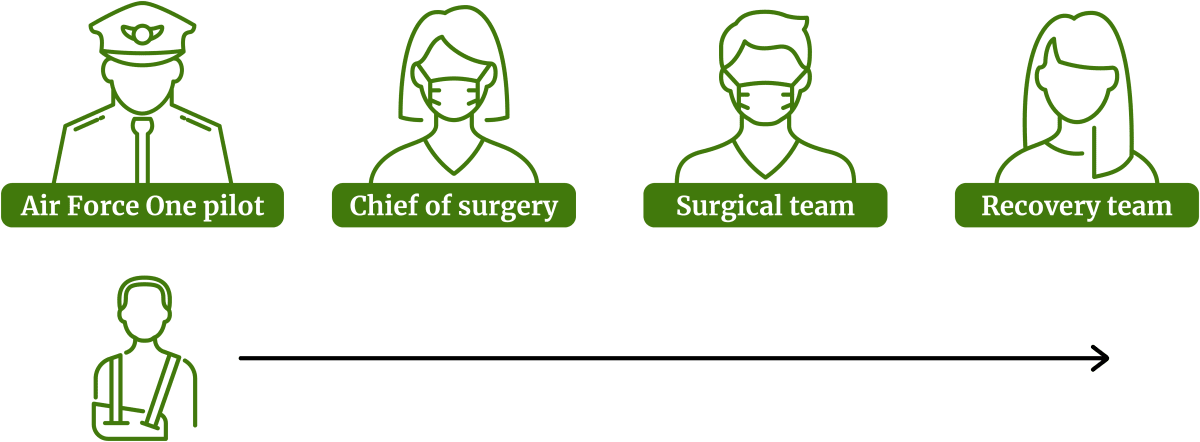
As before, optimizing one side lowers the efficiency of the other. The President’s need reduces the ability of the treatment team to add value to anyone else. The pilots and doctors must clear their schedules to be ready the very moment the President arrives.
At first glance, the difference between maximization of work unit efficiency (the President) and resource efficiency (the airport and hospital staff) feels inevitable. But that’s not true. The decision to follow one path or another is a choice that any company can make.
The counterintuitive choice of highly focused companies
For most of us, keeping resources busy makes intuitive sense. They are expensive. We don’t want people (or machines) sitting around doing nothing.
But our intuition is wrong.
The most successful companies optimize for work units rather than resources.
They choose to focus on the projects, accepting that this approach will lower the efficiency of their workers.
Why? Because they understand the true cost of stalled work is huge.
When a production plant stalls, the issue is typically visible within seconds. Engineers work fast to address the problem because the stall affects the entire line. But for many businesses, the signals are not so clear. Despite the prodding of to‑do lists (or colleagues), projects rarely complain that they’ve been stuck in someone’s inbox for three weeks, despite the mounting cost of the delay.
Let’s return to our team creating landing pages. The designer has finally finished their part on one of the work units. Ideally, they would hand it down the line, but this isn’t possible. The ‘unoptimized’ developer has been temporarily assigned a different task. This substitution is typical of the company’s worker‑first approach, and the landing page project stalls again.
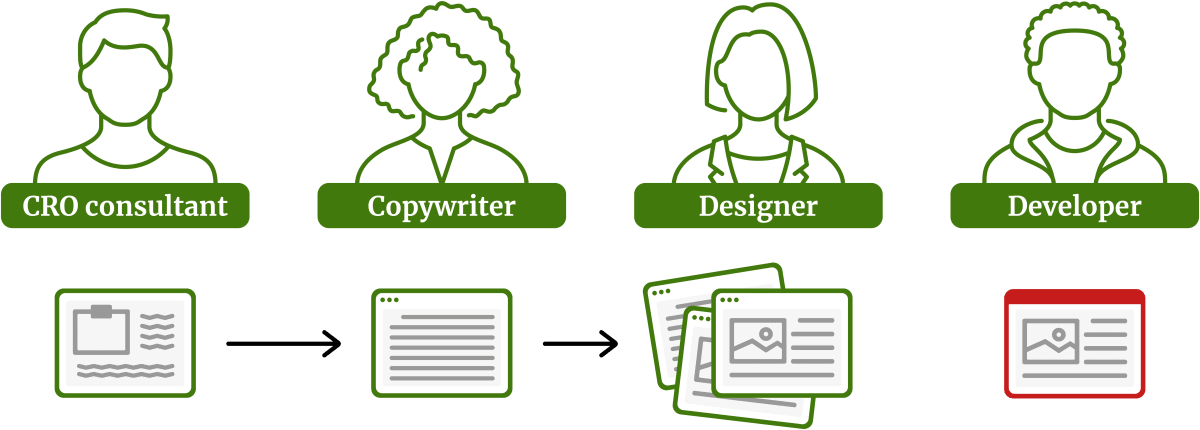
The developer hopefully will become available at some point, but these compounding delays make variation insidious. Everyone in the team is working hard, so the true cost of stalled work is hidden. The consequences lurk in the darkness, leaching our speed, profit, and focus.
Let’s drag them out into the light.
Five hidden costs of stalled projects
Worker optimization causes stalled projects, which is much more harmful than it sounds because it creates secondary work.
Secondary work has no value for your customer but costs you time, money, and focus. Consider the activities you have done over the past week, then ask whether your customers would willingly have paid you to do it. If the answer is ’no’, it’s secondary work.
For example:
- Stalled projects must be stored while they wait. Storage often starts with inboxes and to‑do lists but soon gives way to complex solutions that require time, money, and attention. (We end up managing the stuff that manages our stuff—a project in itself.)
- Stored projects decay. The half‑finished landing page is no longer relevant. The draft web page contains outdated offers. Either way, the project requires extra time and money to complete.
- While the project waits, the opportunity passes. Elements of the demand and the supply may disappear. Perhaps a key contributor has left the business. The client may decide to go in another direction. A sales opportunity may go cold. In any case, our investment is lost.
- Restarting projects has a cost. We’ve all been in meetings where no one knows what’s happening. We dive into old emails or struggle to find the notes we wrote last month. Sometimes, it takes longer to work out where we got up to than it took to do the work in the first place. Resurrecting the project can be the business equivalent of debugging legacy code.
- A project is complete but under-leveraged. We know someone who spent a month filming and editing a charity video. The finished piece was brilliant, but two years later, barely anyone had seen it. The charity team uploaded it to their YouTube channel and marked the job as done. They could have leveraged that work through many other channels, but the team had been assigned to other projects when it came to launching it.
Stalled projects don’t just create secondary work; they tie up the time and money already invested. It can help to imagine that every unfinished project has a real dollar value attached—calculated in terms of the amount of work that has gone into it. When we add these together, the result can often be upsetting because the investments can only pay out when projects are completed.
Of course, this isn’t a thought experiment. It’s real.
The huge upside of putting projects first
Remember the poor little neglected work unit we followed earlier on?

What would happen if we ignored everything else and focused solely on completing it?

First, we finish much sooner. Second, we reap our reward much sooner than we would have. The reward may be a payment from a happy client; or an insight from a landing page test. Either way, it illustrates a powerful truth.
Highly focused businesses may do less, but they get more done.
They aren’t buried by secondary work; they get projects finished. They are reaping the rewards of focused attention. Again and again and again.

Naturally, this kind of focus is easier for some companies than others. Process engineers tend to work on production lines that create consistent products. In contrast, many businesses (including CRE) create value through highly bespoke work units tailored to each customer. And yet, the principle of maximizing work unit efficiency remains our constant goal.
The question is this—how do we go about putting projects first?
(Don’t worry. We aren’t about to suggest you hire staff to sit around and wait for something to do. We have something simpler and far more powerful in mind.)
The simple rule that improves focus (and almost everything else)
At CRE, we routinely manage overwhelming volumes of work because we put projects first and know how to focus.
At the start of this article, we suggested that focus might be a side effect of something else, and here it is, the simple rule that flows from everything Martin learned during his aerospace days.
Keep your work-in-progress low.
Remember the companies that took six months to implement A/B testing software? They were smart, driven teams struggling with a thousand things to do. For most of them, the rate of projects started exceeded the rate of projects completed. So it was inevitable that only a small percentage of their projects would reach completion.
They didn’t focus because they couldn’t focus.
At CRE, we keep our task lists short (and track them in Google Docs) by following a simple principle:
Finish what’s in front of you before starting something new.
It’s that easy and that hard. You will stumble sometimes—we do too. But bear down. Try it for a day, then a week, then a month. Watch what happens to your productivity and profit.
Pick your highest-priority, doable project. Make it royalty. Give it all the resources it needs. No distractions. No diversions. Just a single flow from idea to execution to value.
And let us know how you get on!
How much did you like this article?
What’s your goal today?
1. Hire us to grow your company
We’ve generated hundreds of millions for our clients, using our unique CRE Methodology™. To discover how we can help grow your business:
- Read our case studies, client success stories, and video testimonials.
- Learn about us, and our unique values, beliefs and quirks.
- Visit our “Services” page to see the process by which we assess whether we’re a good fit for each other.
- Schedule your FREE website strategy session with one of our renowned experts.
Schedule your FREE strategy session
2. Learn how to do conversion
Download a free copy of our Amazon #1 best-selling book, Making Websites Win, recommended by Google, Facebook, Microsoft, Moz, Econsultancy, and many more industry leaders. You’ll also be subscribed to our email newsletter and notified whenever we publish new articles or have something interesting to share.
Browse hundreds of articles, containing an amazing number of useful tools and techniques. Many readers tell us they have doubled their sales by following the advice in these articles.
Download a free copy of our best-selling book
3. Join our team
If you want to join our team—or discover why our team members love working with us—then see our “Careers” page.
4. Contact us
We help businesses worldwide, so get in touch!
© 2025 Conversion Rate Experts Limited. All rights reserved.




